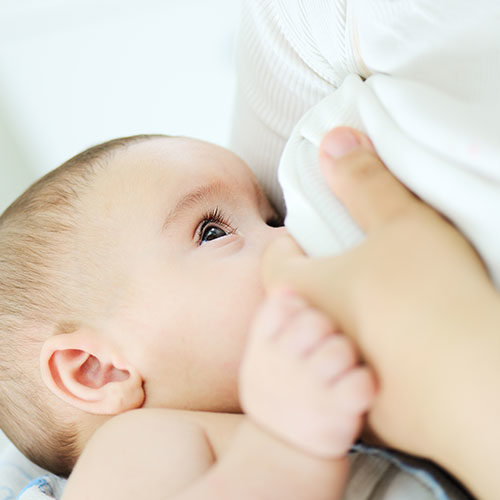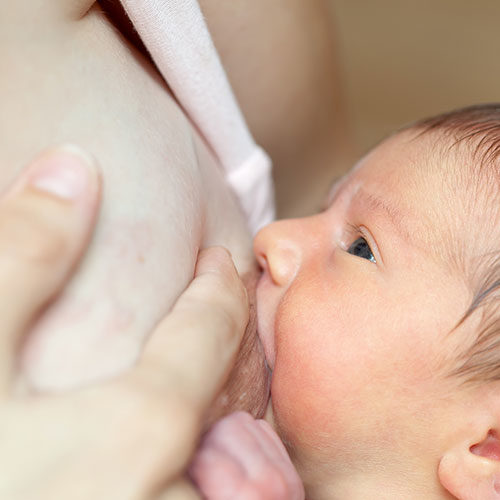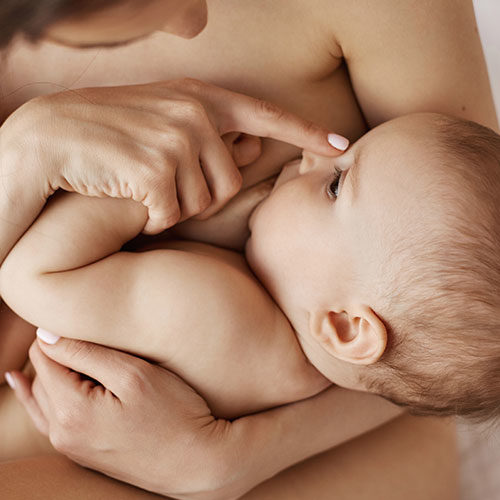How can I maintain a fitness regime and lose weight while Breastfeeding?
Post the birth of the baby, a lot of women start thinking about losing the weight gained during pregnancy. This happens, for some, due to the familial/societal pressure and/or conditioning and for some other, due to their own wishes and expectations. Losing the pregnancy weight can be a lengthy process for the simple logic that – the woman carried her baby in her womb for 9 months and she took 9 months to gain that weight. Losing it could take just as long or perhaps a little longer.
It might be a good idea to focus on being healthy and fit rather than only losing weight. Losing weight is important too, and can be a part of the process. Whenever there is a conversation about being healthy and fit, it typically involves 2 main components – one is eating healthy food and the second is doing exercise. For a mother, having birthed a baby, there is another major component which is very crucial. It is Breastfeeding. Thus, the 3 major components of women’s fitness post giving birth are as follows.
- Breastfeeding
- Food
- Exercise
1. Breastfeeding
Breastfeeding can help tremendously in staying fit and losing weight. There are many ways in which breastfeeding can contribute to a new mother being healthy, fit and lose weight.
- Breastfeeding helps the uterus contract and get back to its original size and shape. This can get the belly back in shape to a great extent.
- Breastfeeding mothers burn around 500 additional calories daily. It is roughly equivalent to doing 45-60 minutes of medium intensity exercise. This can potentially help her lose weight.
- Breastfeeding also uses stored fat from the body. The pregnancy weight can be lost in this manner as well.
Many women have reported that they lost all of their pregnancy weight by merely breastfeeding their baby. The time taken varies through the range of 4 months to a year. However, many other women have reportedly seen no impact of breastfeeding on their weight. This is because there are a number of factors involved here including genetic predisposition, certain medical conditions, metabolism, the amount of weight gained during pregnancy and other lifestyle factors. Whether or not a mother is exclusively breastfeeding can also impact the extent to which breastfeeding can be effective in losing weight.
2. Food
Healthy food has always been emphasized in order to achieve fitness. Healthy dietary practices can work wonders in one’s fitness journey. In the case of a breastfeeding mother too, food plays an important role. As mentioned before, breastfeeding leads to burning an average of 500 additional calories each day. So, this would also imply consuming additional calories to meet up the body’s demand. It is natural for a breastfeeding mother to feel way hungrier than usual. And it is important for her to eat to hunger. Experts suggest that she needs to consume a minimum of 1800 calories per day.
Crash dieting, starving, skipping meals etc are never recommended for a breastfeeding mother. The alternative is to focus on consuming nutrient-rich food. It is natural to feel very hungry while nursing the baby during nights, cluster feeding during growth spurts etc. It is important to have snacks ready at such times. The key is in replacing nutritionally low foods with nutritionally dense foods like nuts, dry fruits, fruits, vegetable sticks with hummus or curd etc. Homemade chikkis, laddoos made with nuts, ghee and jaggery etc are great options. Along with eating good food to hunger, it is also essential to pay attention to adequate hydration. Just as a breastfeeding mother feels hungrier, she also feels thirstier. Drinking to thirst is equally important.
3. Exercise
Exercise is an integral part of anybody’s fitness journey. A lot of women wonder about if and when they can start/resume working out after giving birth while breastfeeding. Usually, once the baby is 1.5 to 2 months old, a mother can start including some exercise in her daily routine and gradually increasing it with time. However, it is important to note that – working out should be started or resumed only after getting a nod from the gynaecologist. There are different guidelines and time boundaries for women having a c-section birth as opposed to women having a vaginal birth. Certain individual conditions/complications may also affect the advice about resuming exercise.
It can be challenging to find time for exercise with a young baby. For mothers living in nuclear set-ups, it might be even more difficult to find some time to herself. So, simply starting with some stretching or going for a walk while baby-wearing can kick start the process. Zumba, aerobics are all various forms of exercise that can be done while supervising the baby.
It is important to note that fixating on only weight loss as the outcome of exercise can be stressful. The focus should be on being healthy and fit.
Safe Dieting while Breastfeeding
If a breastfeeding woman wishes to lose weight safely, she can follow certain guidelines.
- Wait until the milk supply has been established. It is better to start any kind of dieting only after 6-8 weeks postpartum.
- Make sure to consume at least 1800 calories every day. When caloric intake is severely restricted, fat-soluble environmental contaminants and toxins stored in body fat are released into the milk.
- Do not follow crash dieting. Rapid weight loss programs can cause a dip in supply. And even when supply is not hampered, the mother’s health might deteriorate as the milk quality does not suffer, but the mother faces undernourishment. Losing weight gradually (at the rate of approximately half a kg per week) does not have any adverse effect on the milk supply or mother’s health.
- Decreasing calories gradually is essential. A sudden drop in calorie consumption can cause a dip in milk supply as well.
- Sleeping as much as possible can be helpful as sleep deprivation can cause increased hunger and appetite which can interfere with losing weight.
Tips for losing weight while breastfeeding
- Low carb diets are compatible with breastfeeding. Eliminating unhealthy carbs like bread, pasta, junk snacks etc is helpful. It is important to eat lots of fruits and vegetables and keep protein levels up.
- Do mild to moderate exercise once the gynaecologist has given a go-ahead.
- Drink plenty of water.
- Have more, smaller meals. It spreads the calorie intake.
- Breastfeed frequently (on demand) to boost calorie burn.
- Breastfeed for longer. Research suggests breastfeeding for more than 6 months increases maternal weight loss.
References
https://www.llli.org/breastfeeding-info/weight-loss-mothers/
https://kellymom.com/nutrition/mothers-diet/mom-weightloss/
https://www.healthline.com/health/parenting/how-to-lose-weight-while-breastfeeding#seeking-help
https://parenting.firstcry.com/articles/how-to-lose-weight-while-breastfeeding-without-reducing-your-milk-supply/

Wish to speak with a member of our team who is a certified lactation professional and also an experienced breastfeeding mother, click on this link.
Medical Advice Disclaimer
THIS WEBSITE DOES NOT PROVIDE MEDICAL ADVICE.
The information, including but not limited to, text, graphics, images and other material contained on this website are for informational purposes only. No material on this site is intended to be a substitute for professional medical advice, diagnosis or treatment. Always seek the advice of your physician or other qualified health care provider with any questions you may have regarding a medical condition or treatment before undertaking a new health care regimen, and never disregard professional medical advice or delay in seeking it because of something you have read on this website.
Disclaimer
We understand and acknowledge that parents and babies can be of various genders on a spectrum of LGBTQI+. Families come in diverse flavours. However, in our articles, for the sake of simplicity and convenience, we will be referring to the breastfeeding parent as the mother and using the female pronouns- ‘she’ and ‘her’ for babies. Babies can be nourished and nurtured in different ways and while we have used the terms breastfeeding and nursing, we recognize that parents can opt to chest feed or finger feed.
We don’t have conflicts of interest and declare, and we are compliant with the WHO code of marketing of breastmilk substitutes and the IMS act.
In case you find any information on this website that needs to be updated, please write to us at info@bsim.org.in






